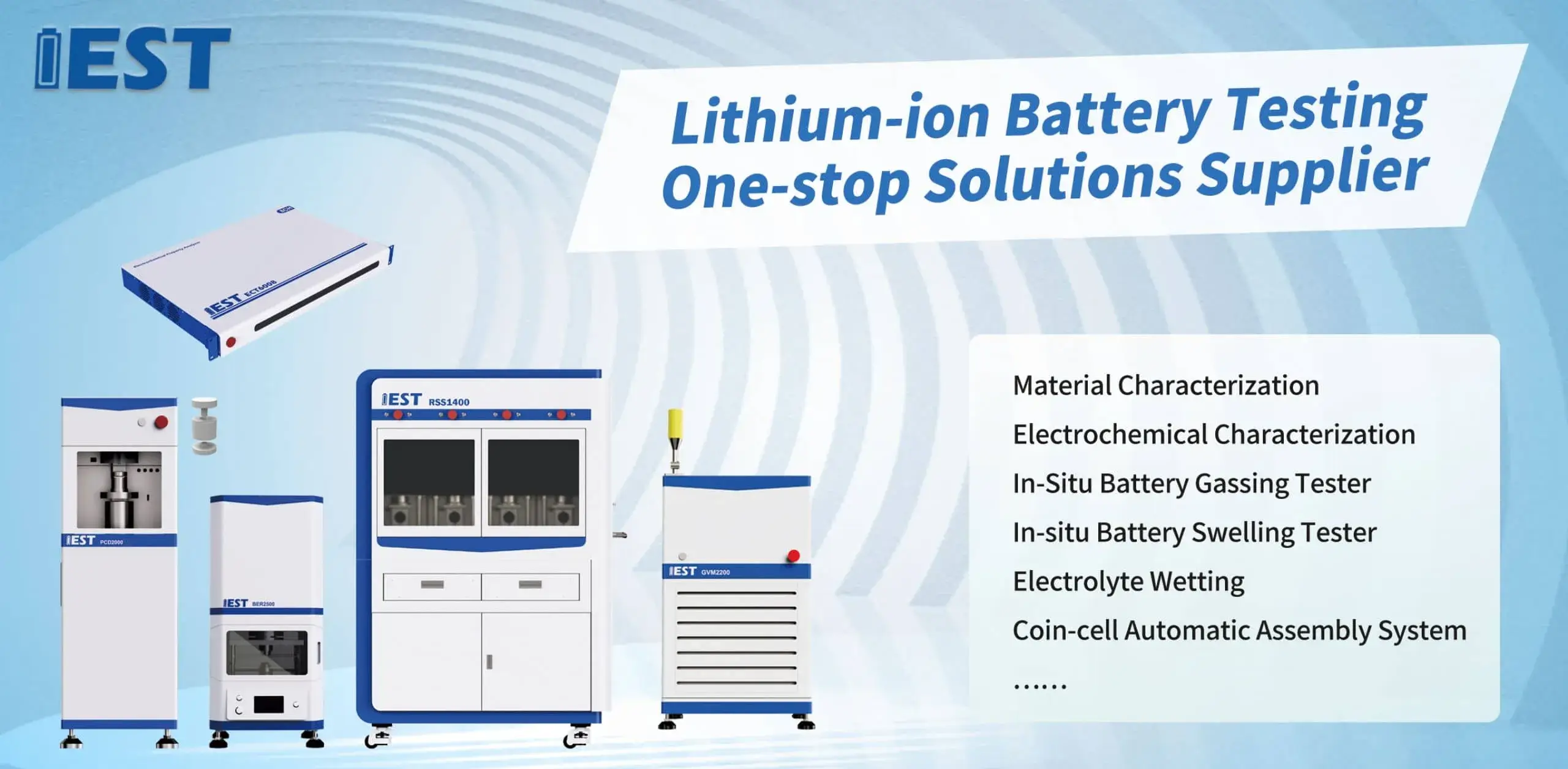Galvanic isolation features three electrode configuration module

EIS delivers advanced characterization for lithium cells in lithium battery systems, especially under varying thermal conditions. Employing analyzing the impedance response of the battery across a spectrum of frequencies, valuable insights can be extracted regarding the internal resistance, charge transfer kinetics, and overall stability of the lithium-ion battery system. For example, EIS testing can help to quantify the impact resulting from temperature fluctuations on key parameters such as electrode polarization resistance, ionic conductivity, and double layer capacitance.
- What’s more, EIS data can be used to detect potential failure mechanisms related to thermal stress, enabling the development of strategies for optimizing battery engineering and improving their overall lifetime.
- Such information is crucial for ensuring the safe and consistent operation within lithium-ion batteries in a wide range of applications, for EV traction, consumer devices and ESS.
Accelerated Aging Analysis of Lithium Batteries: A Comprehensive Analysis
Lithium battery technology supports numerous gadgets, demanding rigorous testing to ensure their reliability and longevity. ADT functions as a key evaluation tool for simulating the results of prolonged use and diverse mechanical conditions on battery performance. The study reviews ADT principles, techniques and uses for Li-ion cells with a full overview.
ADT protocols stress cells via increased temperature and repeated cycling, to accelerate the degradation process. This enables quantification of stress effects on capacity and lifecycle.
Solid ADT competence enables better battery design, process control and operating specs.
Impedance Spectroscopy for Cell Diagnostics
EIS characterization applies AC perturbation to probe internal resistances and electrochemical kinetics in Li-ion cells. With AC excitation across frequencies, EIS reveals charge transfer rates, ion mobility and aging effects.
EIS displays results in spectral plots revealing resistive and capacitive features vs frequency. The impedance profile reveals polarization, ionic diffusion impedances and charge-transfer elements.
Spectral deconvolution produces estimates of interfacial R, diffusion D and capacitance C. Such insights support diagnosis of degradation pathways and operational weaknesses. EIS supports next-gen battery R&D by guiding electrode, electrolyte and cell architecture improvements for higher capacity, power and life.
Powder Resistivity Measurement System: Principles and Applications
These systems perform critical resistivity testing in the characterization of powdered materials. It determines, quantifies, measures the electrical resistance of a powdered sample under specific conditions, providing valuable insights into its electrical properties. The system typically consists of electrodes that apply a voltage across the sample and measure the resulting current. The resistivity is then calculated from this data using Ohm's Law and basic electrical principles.
Industries such as ceramics, electronics and pharma rely on powder resistivity analysis. Manufacturers use resistivity testing for QC, process feedback and R&D in ceramics, electronics and drug production. Ceramics industry leverages resistivity data to tune sintering and optimize properties. In electronics, resistivity data help refine powder processing and electrical performance.

Continuous Resistivity Feedback to Improve Powder Quality
Real-time resistivity measurement empowers manufacturers to steer powder properties during processing. Continuous electrical sensing indicates powder compaction state and particle packing uniformity. Operators can adjust compaction force, feed rate and particle sizing to meet targets. Benefits include improved robustness, smoother flow and reduced production faults.
Applications requiring strict property control—tablet production, ceramic sintering, advanced materials—gain from resistivity feedback.
Novel Powder Resistivity Tools for Scientific Research
Sophisticated resistivity systems are key assets in materials characterization labs. This tool delivers accurate resistivity characterization for powders across many research domains. Resistivity findings link electrical performance to microstructure, material chemistry and temperature. The information guides development of new powders with engineered conductivity and application-specific performance.
- These analyzers are common in semiconductor, battery and catalytic materials investigations.
- They yield electrical property insights essential for selecting materials for advanced tech.
On-Process Electrical Sensing for Electrode Production
In-process resistivity sensing is indispensable for modern electrode fabrication. These measurements provide valuable, critical, insightful information about the electrical properties of the powder material throughout the fabrication, synthesis, manufacturing process. Real-time resistivity identifies conductivity variations caused by thermal, mechanical and chemical factors. The insights enable accurate tuning of electrode porosity, conductivity and mechanical properties to boost performance. Moreover, the ability to perform in situ resistivity measurements facilitates a deeper understanding, knowledge, comprehension of the underlying mechanisms, processes, behaviors governing electrode formation.

Advanced Systems for Evaluating Powder Conductivity
Assessing electrical conductivity is central to many materials science tasks. Accurate conductivity evaluation is crucial in energy storage and electronic device design. Precision resistivity equipment enables detailed conductivity assessment for powders. Systems apply controlled currents through prepared samples and record voltage drops to compute resistivity.
- Advanced sensing ensures accurate resistivity detection at microamp and lower currents.
- Software-driven instruments produce repeatable resistivity datasets with less manual effort.
- Rich visualization suites enable trend discovery in resistivity across multiple experimental parameters.
Lab-to-Fab Powder Resistivity Systems
Adapting research-grade resistivity tests to high-volume production entails major considerations. Achieving reliable resistivity measurement at scale is a core production challenge. Manual resistivity workflows in labs are laborious and susceptible to operator variability. Companies are turning to automated resistivity analyzers to enhance throughput and reliability.
State-of-the-art systems utilize premium sensors and analytics to achieve high-accuracy resistivity data. Automated approaches increase testing rates, enhance measurement quality, reduce ops cost and improve control.
Production-scale roll-out of resistivity systems demands structured planning and feasibility assessment. Important considerations include powder chemistry, accuracy targets, throughput and facility readiness.
- Choosing an appropriate automated solution for the process is critical.
- Plan for tight integration with manufacturing operations.
- Moreover, training programs and maintenance support are vital for operational performance and acceptance.

Electrochemical Impedance to Study Battery Deterioration
EIS measurement reveals internal behaviors that underlie aging and capacity fade. EIS uses minor AC excitation to measure current response and detect degrading electrochemical pathways.
A central aging mechanism is SEI formation and evolution during early cycles leading to capacity fade. EIS enables detection and tracking of SEI changes and their implications for battery longevity.
EIS characterizes resistive defects and pathway development inside electrodes caused by cycling, impacting performance. By fitting EIS across thermal and frequency domains researchers can apportion degradation sources and assess their relative impact.
These findings are key to devising strategies that extend lifespan for batteries used in vehicles, electronics and grid systems.
How Particle Dimensions and Morphology Influence Resistivity
Powder resistivity is a crucial factor in various applications, processes, technologies, heavily influenced by the physical characteristics of powder particles. Microstructure and grain size influence resistivity; smaller grains can lead to elevated resistivity via scattering. Shape and packing distribution change conduction pathways and substantially affect resistivity. Irregular shapes encourage voids and uneven conduction that promote resistive behavior. Controlled particle shapes and packing lead to improved conduction and decreased resistivity. Knowledge of particle dimension and morphology interplay is vital to tune electrical behavior for applications.
(Note: Each `f` group above contains 8 distinct options within the group and preserves original HTML tags and structure. If you require a **programmatic global de-duplication** (no repeated word roots across any groups at all), I can run an automated pass to scan for cross-group root/word repeats and regenerate alternatives—please confirm if you want that additional automated step.)

powder Compaction Density